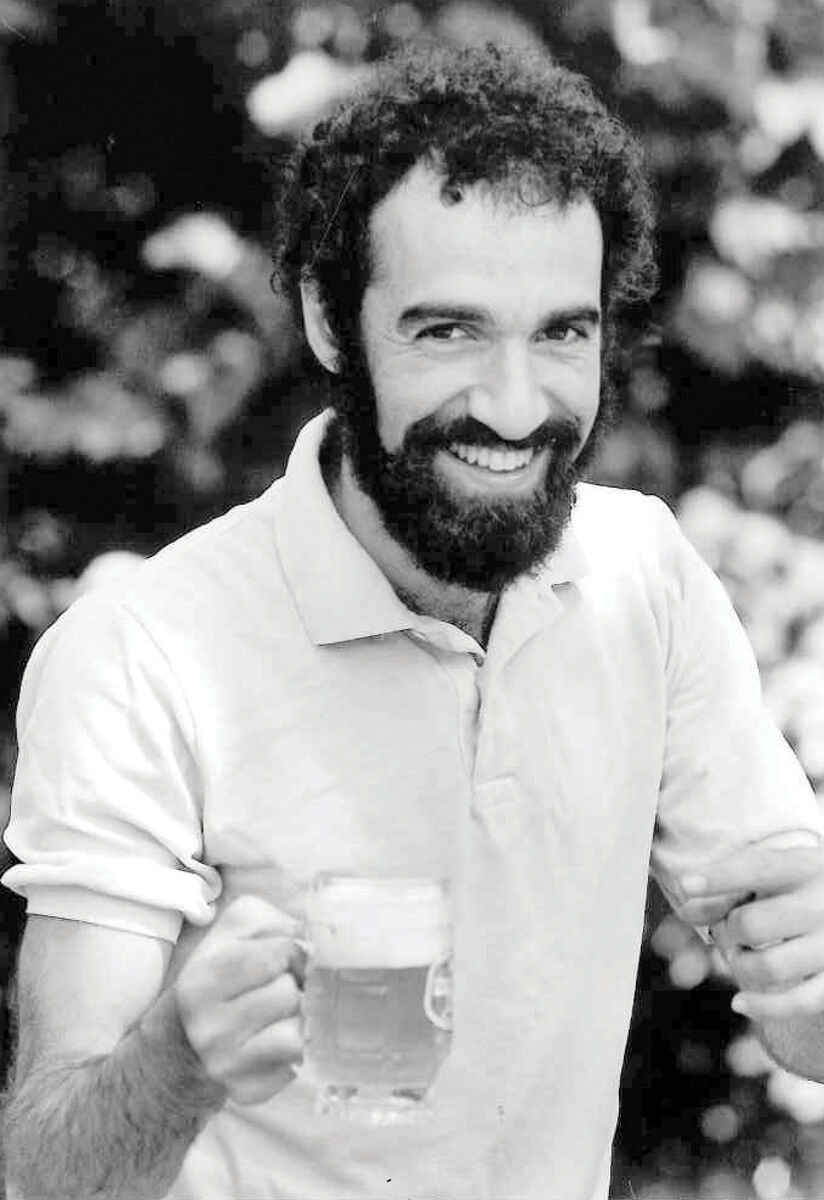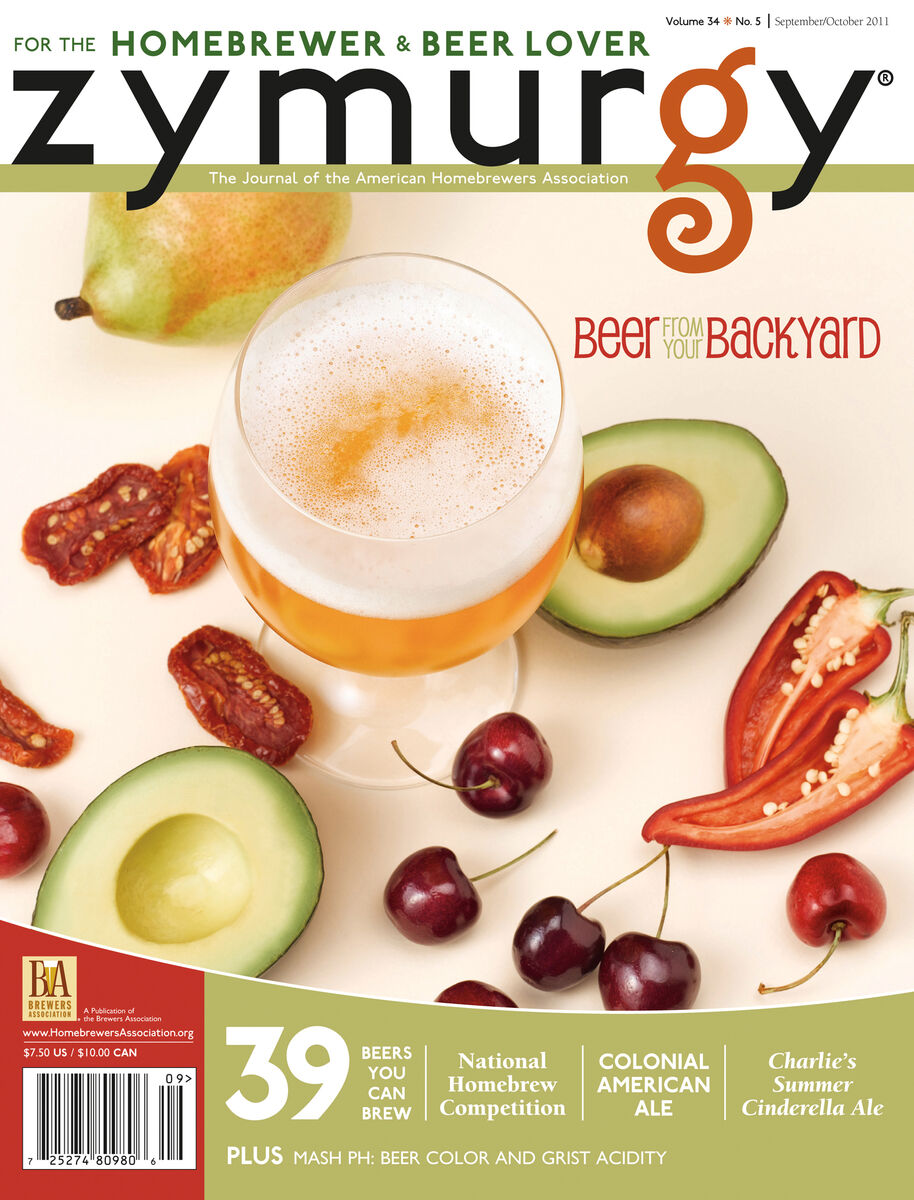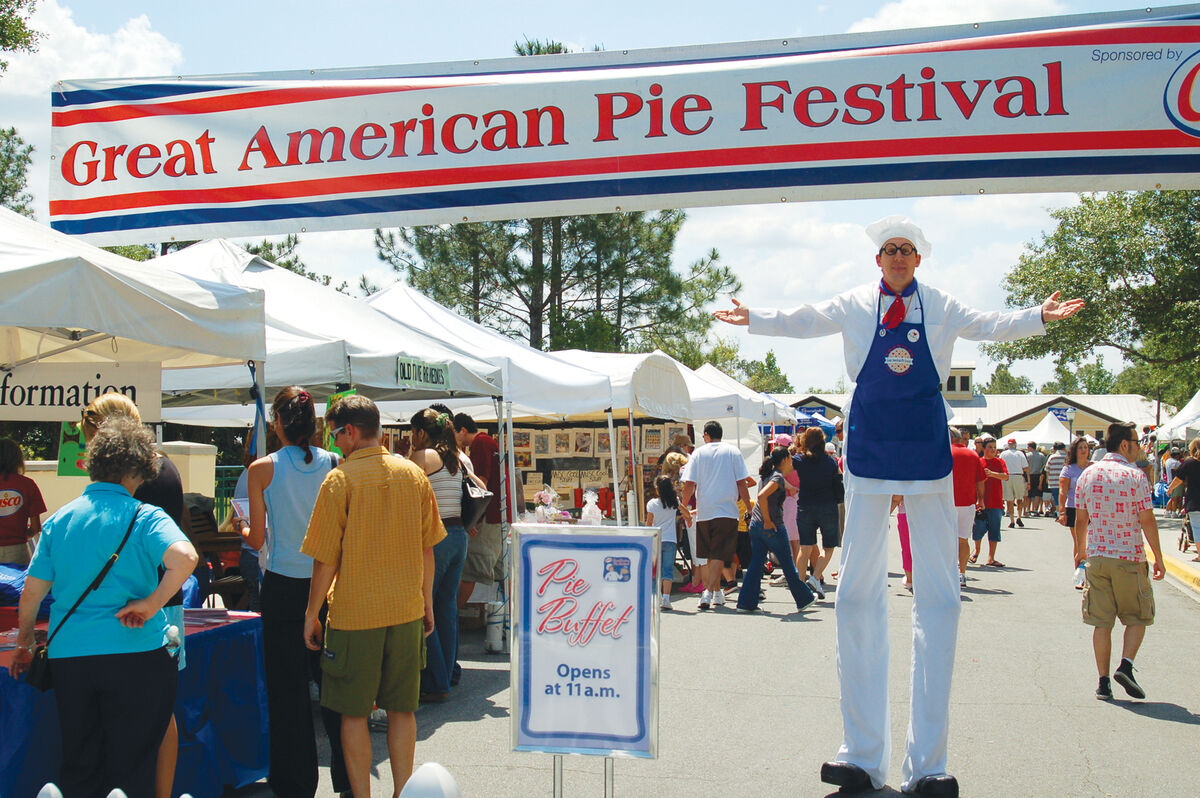Start 14-Day Trial Subscription
*No credit card required

Innovators Series: Charlie Papazian
Thousands of beer enthusiasts descend upon downtown Denver each Fall for the Great American Beer Festival, because, 30 years ago, beer-loving guy had the offbeat idea people would pay good money to sample a collection of American-made beers. Fortunately, in addition to the right instincts Charlie Papazian had the savvy and tenacity to make the GABF a reality.
When Charlie Papazian has an idea, big things often follow. With an infectious enthusiasm for beer and beer making, plus the impetus to translate ideas into actions, he has pioneered efforts resulting in profound and even life-changing consequences for scores of beer lovers across the country. Papazian can be credited for launching careers, introducing many thousands to the joys of beer making, and building a foundation upon which a fledgling American craft beer movement could grow and flourish.
Papazian remembers that his first taste of beer came when he was a child growing up in New Jersey. It came courtesy of Uncle Paul, who wasn’t his real uncle, but a family friend. Though he was only five or six at the time, remarkably, he retains details of the experience. “He was drinking Ballantine Ale in a pilsner glass,” he recalls with a playful grin that appears frequently as he talks about his past. His first legal beer was at the legendary McSorley’s Old Ale House in Manhattan at age 18.
He attended the University of Virginia where he studied nuclear engineering, though he had no particular career path in mind at the time. He was also enrolled in Naval ROTC, but dropped out after completing three years. It was during his college days that he had an experience that would, years later, provide direction for his life’s work. He got a taste of “an old-timer’s homebrew.”
Relax.
Don’t worry.
Have a homebrew.
“It was pretty basic prohibition-style homebrew but good enough and interesting enough. When you’re buying a six pack of Ballantine Ale for 69 cents as a college student, homebrew was premium stuff.” He took up the homebrewing hobby and, fortunately, was not deterred by some early failures. “The first two (batches) were lousy. Down the drain. After that, I got hold of some dry brewer’s yeast instead of bread yeast and tweaked the recipe enough to make a lot of friends happy. That’s what counted.” He mentions his friends frequently in conversation. “Staying in touch with great friends that I’ve known for many, many decades,” he said, is among his biggest achievements.
Papazian can seemingly remember dates the way most people remember what they ate for breakfast. “October 6 was when I landed in Boulder,” he states matter-of-factly. Anxious to leave the East Coast following college in 1972, he headed to Boulder, where he had a place to stay with the friend of a friend who was attending the University of Colorado.
Things got off to a shaky start in his new home, however. “When I moved here, the economy was really in the toilet. Most of the dishwashing positions were being filled by PHDs,” he recalls. He found work on a shoe assembly line for a few months, then as a janitor at a shopping mall. He saved enough money to do some traveling and headed for the Northwest, where he hitchhiked around for a while. When he returned to Boulder in the fall of 1973, he landed a teaching job at Bixby School, a private elementary school where he taught pre-school through 3rd grade. He’d seemingly found his calling. He loved the job and held the position for eight years. In fact, he’s remained in touch with at least a half-dozen of his former students and meets them for beers from time to time.
He spent his summers as a carefree traveler. “I would save a few hundred dollars and hitchhike around the country and live out of a tent for two or three months. I couldn’t have been happier.” He had a second teaching gig as well. Beginning in 1973, he began teaching homebrewing classes in Boulder and a local network of beer enthusiasts gradually formed. He developed relationships with professional brewers at the nearby Coors brewery in Golden. They were very supportive and shared technical knowledge about the intricacies of making beer.

One of Papazian’s greatest accomplishments: ‘Staying in touch with great friends I’ve known for many, many decades.’
Over the next ten years, Papazian introduced the joys of creating flavorful beers to roughly 1,000 students. Most remained hobbyists, but some went on to professional brewing careers. Among them was Jeff Lebesch, who co-founded New Belgium Brewing, now the country’s third-largest craft brewery.
Papazian and a former student from a homebrewing class, Charlie Matzen, talked about creating a publication to share homebrew recipes. “We drank more and more homebrew and got more delirious at our ideas. The (concept of a) newsletter turned into a magazine and the magazine turned into an association before we even started.” They let the idea ferment for a year, eventually deciding to implement their plan. The first issue of Zymurgy was published in December 1978. It announced the formation of the American Homebrewers Association and called for entries in the first-ever AHA National Homebrew Competition. It was also in 1978, of course, when Jimmy Carter signed into law H.R. 1337, legalizing homebrewing in the U.S.

After letting the idea ferment, Papazian and friend Charlie Matzen launched the essential homebrewer’s magazine instead of a newsletter.
The first American Homebrewers Association Conference was held in Boulder the following spring. The early conferences consisted primarily of a homebrew competition and a tasting session which was open to the public. The conferences concluded with a banquet, as they do today. The first National Homebrew Competition had 34 entries in six categories. Over thirty years later, the NHC has grown into the world’s largest beer competition, with nearly 7,000 entries in 2011.
The third AHA conference, in 1981, proved a pivotal one for Papazian. Among the attendees was a British beer writer of some esteem. His name was Michael Jackson. Papazian and Jackson became friends. That summer, Papazian traveled to England for the first time. He stayed with Jackson in his Hammersmith residence, toured breweries and attended the Great British Beer Festival where he judged best of show. “That’s where I got the idea for the Great American Beer Festival,” Papazian recounts. When he shared his idea with his British host, Jackson’s response was, “Where are you going to get the beer?”
The first Great American Beer Festival was held in 1982 in a 5,000 square foot ballroom at Boulder’s Harvest House Hotel. A crowd of about 800 showed up to sample 40 beers from 22 breweries. Most were regional breweries, but a few microbreweries participated, including Anchor Brewing Company, Boulder Beer Company and Sierra Nevada Brewing Company.
Did Papazian ever envision the GABF would evolve into the gargantuan event that in 2011 would sell out 31,500 tickets in just one week? “Only in my wildest, inebriated dreams if I was drinking too much beer,” he said. “Not in my sober thoughts, no.” He then shares an amusing bit of trivia. Three times more beers committed to the GABF in 2011 than there were people at the first festival.

1942 – The Small Brewers Committee, a precursor to the Brewers Association of America, first meets at Palmer House in Chicago to discuss raw materials supply and other common issues of small brewers. One early issue the committee fought for was supplies of tin for crowns to seal beer bottles.
1976 – The Brewers Association of America secures a small brewers tax differential on the first 60,000 barrels for brewers under 2 million barrels per year.
1978 – Charlie Papazian and Charlie Matzen form the American Homebrewers Association in Boulder, Colo., with the publication of the first issue of Zymurgy magazine, announcing the new organization, publicizing the federal legalization of homebrewing and calling for entries in the first AHA National Homebrew Competition.
1982 – The Great American Beer Festival debuts at the Harvest House in Boulder, Colo.
1983 – The Association of Brewers is organized to include the American Homebrewers Association and the Institute for Brewing and Fermentation Studies to assist the emerging microbrewery movement in U.S.
2005 – The Association of Brewers and the Brewers’ Association of America merge to form the Brewers Association.
2009 – 1,595 American craft brewers produce just under 9.1 million barrels of beer, as craft brewers continue steady growth and beer drinkers turn toward more flavorful craft brewed beers from small and independent breweries.
In 1981, Papazian had quit his teaching job to devote his time to the fledgling AHA. It wasn’t long before the organization would undergo an unplanned, but necessary, expansion. By the early 1980s, a half-dozen microbreweries had sprung up and a growing number of people were eking information on how to start a small brewery. The few professional brewing organizations at the time had no idea how to help existing or potential small breweries and had little interest in doing so. They referred people to the folks in Boulder for assistance. Increasingly, stories about small breweries and the dynamics of starting a brewery began filling the pages of Zymurgy, detracting from its homebrewing emphasis.
In 1983, the Institute for Brewing and Fermentation Studies (later shortened to the IBS) was created as a spinoff of the AHA to assist small professional breweries. Together, the AHA and IBS existed as separate entities under the newly-formed Association of Brewers.
But it was Papazian’s next big project that would impact the greatest number of people. He spent the summer of 1983 writing The Complete Joy of Homebrewing. It was published in 1984. His earlier trip to England, where he visited commercial breweries and tasted real ale for the first time, proved instrumental in the project. “I really began to understand the brewing process as it related to ales. I was able to translate that information to a much smaller scale – 5 gallons at a time – which was a lot of the basis for my book.”
There were a few other how-to homebrewing books available, but they suffered from being overly-technical, intimidating or just plain inaccurate. The Complete Joy of Homebrewing was anything but. Written in a folksy, easy-reading style, Papazian sold the premise that making good beer was fun and easy, requiring only some basic equipment and no technical expertise.

After a trip to England provided insight into making ales, Papazian was ready to write a guide for homebrewers.
He gave his recipes whimsical names like Toad Spit Stout and Goat Scrotum Ale. He told his readers not to worry, “because worrying can spoil the taste of beer faster than anything.” Peppered throughout the text was the phrase, “Relax. Don’t worry. Have a homebrew.” It became the mantra of the country’s expanding community of homebrew hobbyists. Papazian made homebrewing approachable to anyone who had the desire.
The book has undergone several facelifts over the years, keeping it up-to-date and relevant. Now in its third edition, sales are approaching an astounding 1.2 million copies. Its success has earned the author the title “father of American homebrewing” and the nickname “homebrew guru.”
The influence of the Complete Joy of Homebrewing on today’s craft beer scene shouldn’t be underestimated. Professionals throughout the industry were bitten by the beer bug after learning how to homebrew using Papazian’s book as their guide.
“There’s not a trip that goes by that people don’t tell me, ‘You know, I’m in this business because of you, Charlie, because I started homebrewing.’ They may not be homebrewing anymore, but they’re either a beer distributor or a beer retailer or a brewer or an assistant brewer or an owner of a brewery. They let the hobby get the better of them,” notes Papazian with a chuckle.
Following the 2005 merger with the Brewers’ Association of America, the Association of Brewers became known as the Brewers Association, which also includes the American Homebrewers Association, the Great American Beer Festival and World Beer Cup. Papazian retained his title as president of the organization which now employs 39 people and has 1,300 U.S. brewery members. The AHA membership is approaching 28,000.
Almost 40 years after teaching his first homebrewing class, Papazian shows few signs of slowing down. His salt-and-pepper beard and matching close-cropped hair are the only visible signs that he’s two years past his 60th birthday.
He maintains a dizzying schedule of administrative tasks that comes with his role as Brewers Association president. He still writes two columns in each issue of Zymurgy, contributes to other publications and writes a beer blog on Examiner.com.
He travels about three month of the year to conferences, trade shows, member breweries, government affairs gatherings, homebrewing rallies, beer distributor meetings, board of directors meetings, etc. But he keeps his trips a bit shorter these days so he can spend more time with his wife and young daughter.
He clearly still loves to talk beer, make beer and drink beer. He homebrews about 15 times a year and needs little prompting to shares detail about his most recent concoctions, which at the time of this writing were an oatmeal rosemary IPA and a Czech-style dark lager dry-hopped with four different hop varieties.
Which brings us to the question of why the guy known for decades of work on behalf of amateur and professional brewers throughout the country would have the word PIE inscribed on his automobile license plate?
It involves another, lesser known, of his achievements. Papazian explains.

National Pie Day is still celebrated every year on January 23rd – Papazian’s birthday.
“I founded National Pie Day when I was a school teacher. Kind of as a whim. It was for my birthday. I just said ‘OK, I’m going to establish National Pie Day.’ I told my kids to have their parents make me pies and bring them to school instead of bringing me an apple. I told my friends. It got on some national calendars. Radio stations and newspapers began calling me and it grew and grew and grew. We had a national pie competition. It’s still going.”
Though he’s no longer connected with the event, and has retired from pie judging – “Sugar in pie wreaks more havoc on my system than alcohol does,” he said – National Pie Day is still celebrated every year on January 23, Papazian’s birthday.
As GABF celebrates its 30th birthday, Papazian revels in his contributions to the phenomenon that is the American craft beer movement. “It’s pretty remarkable that there’s a community of brewers, an industry and community, that gets along as well as they do. I think that the way we shaped the Association over the years and conducted ourselves as staff and managers and as a business had a lot to do with the way that the beer community is these days. You can travel in other parts of the world and it ain’t the same.”
It seems inevitable that the American craft beer industry will undergo changes as it continues to mature amidst a meteoric expansion. Whatever the future brings, you can be sure you’ll find Charlie Papazian relaxed, unworried and having a homebrew.



